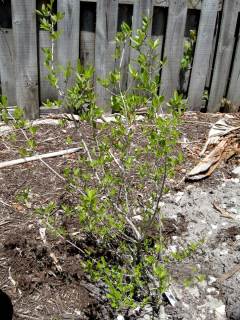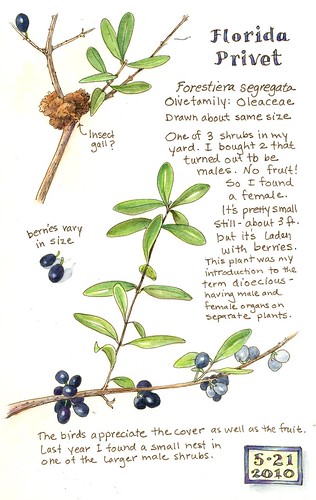For anyone interested in creating a backyard habitat for wildlife, it makes sense to learn everything you can about your own backyard and what kind of plants will thrive there. So this year I joined the Florida Native Plant Society, Palm Beach County chapter. And this week they held their native plant auction, which I attended with the desire to acquire both knowledge and some appropriate plants for my yard. And I came away with both desires satisfied.
The auction had groups of plants arranged into themes: butterfly garden plants, grasses, “staples” (i.e. plants for beginners to grow), orchids, etc. I had hoped to get some grasses, but the bidding was too intense for me, so I had to settle for picking up the starter group, which actually contained many plants that I was looking for, and some that I’d never planned to use but am quite happy to have. (I still need a bunch of “normal” native plants, like cocoplum, wild coffee, firebush, etc., that I have in abundance at the old house, but I’m not ready to try my hand at propagating; at least not yet.)
There was also a silent auction for some plants that didn’t go into the themes, and a few leftovers from their sale table at an event the previous weekend, and I picked up several from each category as well. Over the next few days, I’ll tell you about them.
The first plant I want to talk about is the first one I put into the ground: Florida-privet, Forestiera segregata. It’s a shrub that is perfect for hedging, with tons of tiny little flowers that aren’t particularly showy but that are quite attractive to many insect species. And when it fruits, it’s rather attractive to birds as well.
I’d been trying (quite lazily) to get this plant for some time, so I was quite pleased when a decent-sized one fell into my lap last night. I’ve got it planted in a nice sunny corner of the yard, and can’t wait for it to get established so I can see what it will really look like. After all, it’s hard to tell what it will be like from its appearance right now:
But when it grows up, it will be an extremely important backyard plant, almost a foundation planting. Rufino Osorio, author of A Gardener’s Guide to Florida’s Native Plants, and last night’s MC at the auction, says:
Both the regular and small-leaved forms make excellent, tough, pest-resistant garden plants. As a result of their stiff, densely leafy branches, Florida-privets make excellent hedge plants that may be trimmed to any desired height or shape. […] Although the flowers are small and inconspicuous and lack petals, they are sweetly fragrant and provide abundant nectar for an assortment of insects.
Gil Nelson, in Florida’s Best Native Landscape Plants, agrees:
The dainty and tidy habit; thick, dense, evergreen foliage; drought and salt tolerance; and edible fruit, which are a superb source for songbirds, make Florida privet an excellent landscape plant. Tolerates pruning and shaping.
About all he can find to complain about is that it is “subject to a few insect pests, but not seriously so.”
My newest reference, Craig Huegel’s Native Plant Landscaping for Florida Wildlife has the best advice, and something I hadn’t remembered to check, and will need to address as soon as I find out whether I have a male or female:
[O]nly the females produce the large and dependable crops of 1/4-inch purple fruit that make this such a valuable wildlife plant. […] Because it is dioecious, it needs to be planted in groups.
My little specimen won’t tell me whether it’s male or female for some time, so I’ll have to leave room in the yard for more of this guy to come in at a later date. Elizabeth Smith, over in Southwest Florida and an excellent blogger whom I just discovered, had a similar experience, as you can see from this beautiful page of one of her gardening journals (click on the image to go to her blog post about it, and explore her site for yourself; it’s worth it!):
I can’t recommend her blog highly enough; I wish I had the talent and energy to sketch as she does. Something to aspire to!
[UPDATE, September 2, 2017. This plant has been completely crowded out by the wild lime (Zanthoxylum fagara) that I planted nearby. Wild lime is a very bad neighbor.]


